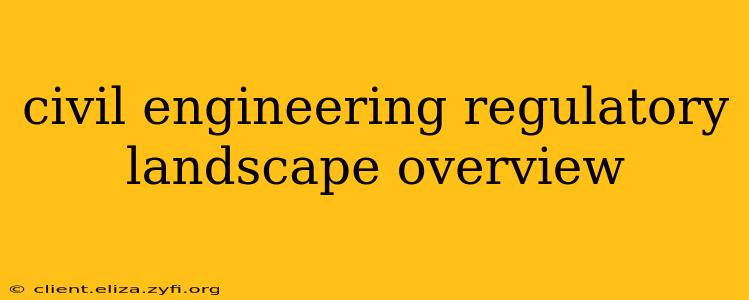The civil engineering profession is heavily regulated to ensure public safety and protect the integrity of infrastructure projects. This regulatory landscape varies significantly across jurisdictions, but common threads weave through the global scene. This overview explores the key aspects of civil engineering regulation, providing a comprehensive understanding for professionals and those interested in the field.
What are the main regulatory bodies for civil engineers?
The primary regulatory bodies for civil engineers are typically governmental agencies at the national, state/provincial, or local level. These bodies often include licensing boards, professional engineering associations, and departments of transportation. Examples include the National Society of Professional Engineers (NSPE) in the US, Engineers Australia, and various state-level licensing boards. These organizations define the scope of practice, set educational and experience requirements for licensing, and enforce codes of ethics. Their roles extend to investigating complaints, disciplining unprofessional conduct, and ensuring engineers uphold professional standards. Many jurisdictions also have specific regulatory bodies for aspects like structural engineering or geotechnical engineering, reflecting the specialized nature of certain civil engineering disciplines.
What are the key regulations governing civil engineering projects?
Regulations governing civil engineering projects are multifaceted and cover numerous areas, including:
-
Building Codes and Standards: These codes define minimum acceptable standards for design, construction, and materials used in various types of structures. Examples include the International Building Code (IBC) and national or regional equivalents. Adherence to these codes is crucial for obtaining building permits and ensuring safety.
-
Environmental Regulations: Significant regulations govern environmental impact assessment, waste management, pollution control, and the protection of natural resources during construction and operation of civil engineering projects. Agencies like the Environmental Protection Agency (EPA) in the US play a vital role in enforcing these regulations.
-
Safety Regulations: Stringent safety regulations aim to prevent accidents and injuries during construction and operation. These regulations often involve detailed procedures for working at heights, handling hazardous materials, and utilizing heavy machinery. Occupational Safety and Health Administration (OSHA) regulations in the US exemplify this type of oversight.
-
Licensing and Professional Standards: As previously mentioned, licensing boards establish rigorous standards for education, experience, and professional conduct. Failure to meet these standards can lead to disciplinary action, including license suspension or revocation.
-
Contractual Agreements: Contracts between clients, engineers, and contractors establish responsibilities, payment schedules, and dispute resolution mechanisms. These agreements are legally binding and must adhere to relevant laws.
What are the common requirements for civil engineering licensure?
Licensing requirements generally involve a combination of:
-
Education: A four-year accredited engineering degree from an ABET (Accreditation Board for Engineering and Technology) accredited program (or equivalent) is usually the minimum requirement.
-
Experience: Several years of supervised professional experience under licensed engineers are typically needed. The exact amount varies by jurisdiction.
-
Examination: Candidates usually have to pass the Fundamentals of Engineering (FE) exam and the Principles and Practice of Engineering (PE) exam in their respective disciplines.
-
Continuing Professional Development (CPD): Many jurisdictions mandate ongoing professional development to maintain licensure, ensuring engineers remain up-to-date with advancements in the field.
How do I find the relevant regulations for my specific location?
Locating the relevant regulations requires researching the specific jurisdiction where the project is located. This involves checking the websites of governmental agencies responsible for engineering licensing and regulation, as well as reviewing local building codes and environmental regulations. It's crucial to consult with legal professionals to ensure full compliance with all applicable laws and regulations.
What are the consequences of non-compliance with civil engineering regulations?
Failure to comply with civil engineering regulations can have severe consequences, including:
-
Legal Liability: Engineers can face lawsuits and significant financial penalties for designs or projects that fail to meet safety standards or cause harm.
-
Disciplinary Action: Licensing boards can impose sanctions, ranging from reprimands to license revocation.
-
Project Delays and Cost Overruns: Non-compliance can lead to project delays, redesign costs, and potential legal disputes.
-
Reputational Damage: Non-compliance can severely damage an engineer's reputation and career prospects.
The civil engineering regulatory landscape is complex but essential for public safety and infrastructure integrity. Understanding these regulations is crucial for anyone involved in the design, construction, and operation of civil engineering projects. Staying informed about current regulations and best practices is key to professional success and responsible engineering.
